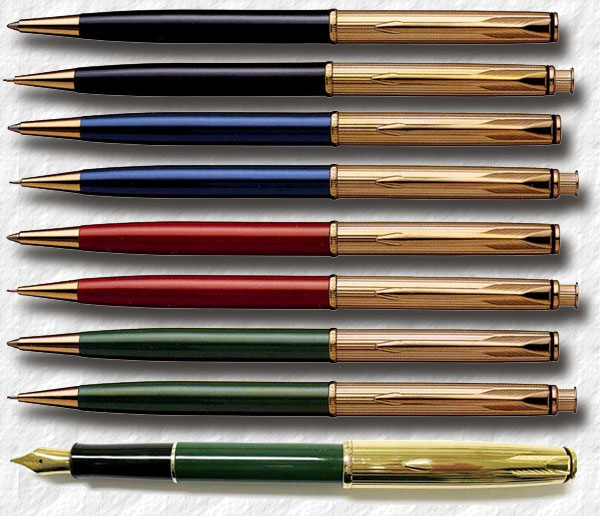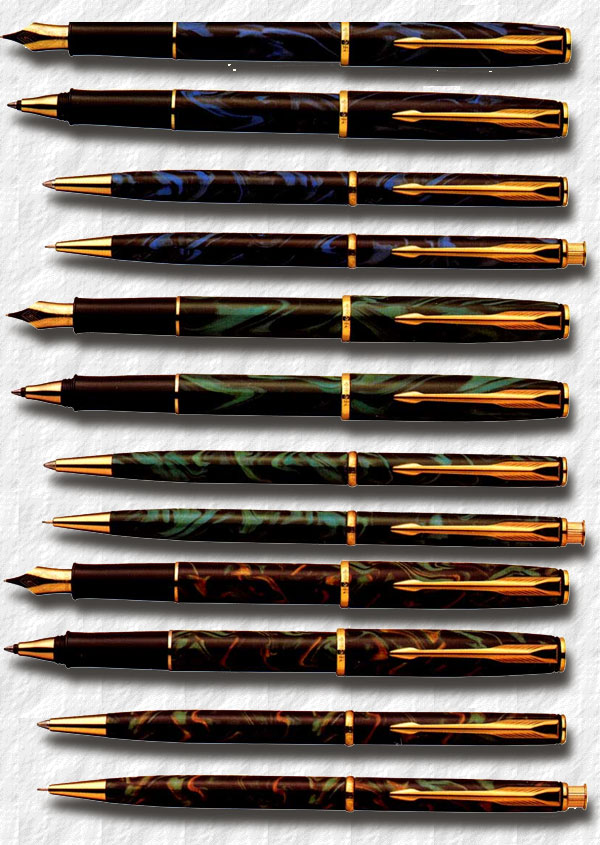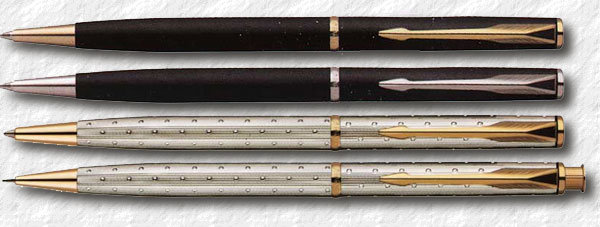
| parkerpens.net |
| PARKERCOLLECTOR.COM |
 1991 — 2008 |
||
|
its subsidairy in Newhaven, UK and by 1993 the company was in turn sold to Gillette who, in 2000, shut down the old Geo. S. Parker Arrow Park factory in Janesville, Wisconsin and had 300 workers laid off. Which in fact ended the Parker as an American pen brand.
|
|
 |
1992 line-up Insignia |
By 1992 the line had the following designs: |
|
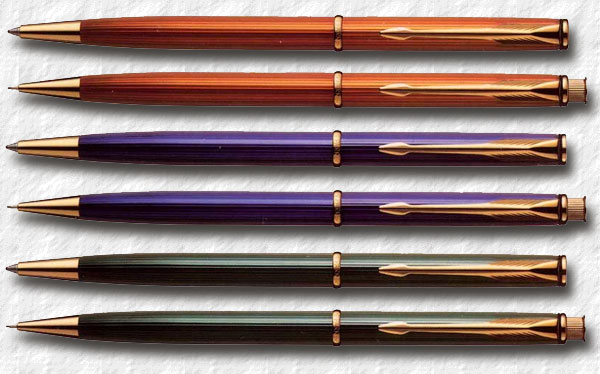 |
1994 Insignias |
|
|
|
1997 Insignias |
|
|
|
1998 lnsignias |
|
|
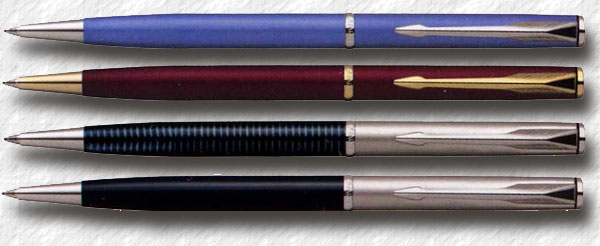 |
2005 Insignias |
|
The 2005 setup: |
|
2007 Insignias |
|
The Insignia was discontinued in 2008. |
© 1995-2019 Tony Fischier and The Parker Pen Company®/Sanford Ecriture.
This page is in no way sponsored by or created by the Parker Pen Company®. All opinions, views, and thoughts expressed herein are expressly the authors, and in no way reflect the opinions, views, or thoughts of the Parker Pen Company®/Sanford Ecriture. All logos and/or images on these pages are © Copyright of Parker Pen Company®Sanford Ecritureunless otherwise stated and is reprinted by kind permission. If You feel that Your copyright has been violated please contact the WEBMASTER.
Everything on this website is copyrighted by law and can not be used without written permission from the author, Tony Fischier. You may however use the information as reference material and although it is forbidden to make digital copies or reproductions it may be physically printed for personal use, which does not include use on other web pages or in advertising. You may however quote parts of the content of this website, digitally or physically, providing that the source and author is clearly stated, together with the copyright information. In the US referred to as Fair use. If you use any information on this site, add a link.
Feel free to donate a small sum through Paypal to help this site to stay online. Acknowledgements.
Parkercollector.com in translated versions
